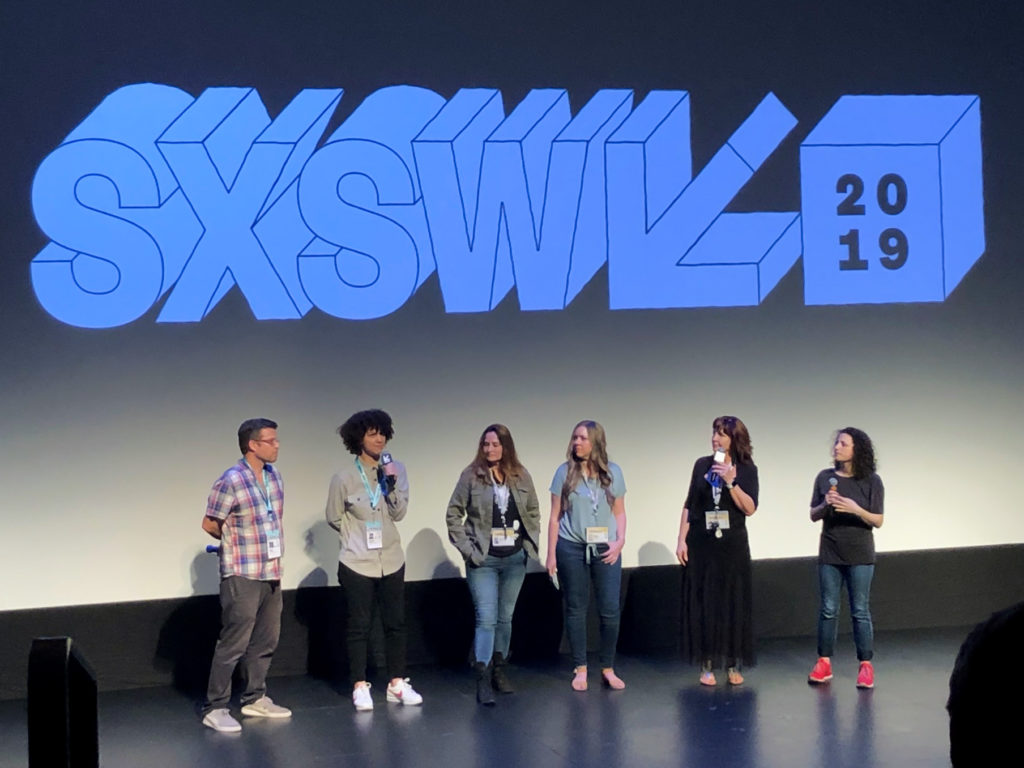“We are actually Religion, that seems like an Art Piece, that seems like a religion, that seems like performance art, that seems like a joke, that seems like a religion…” This quote got my attention in the “J. R. “Bob” Dobbs Church of the SubGenius” and most readily defines the J.R. Bob Dobbs’ movement and the message in Sandy K. Boone’s documentary film currently making its way through the festival circuit. The documentary envelopes everything from the Church’s inception to the current status as the Bob Hobbs’ story is told anecdotal fashion representing the aesthetic of movement itself. The history and evolutions of the Church of the SubGenius is as infamous and as obscure as it is dense and complicated for the outsider to fathom. Founders Doug Smith (a.k.a. Reverend Ivan Stang) and Steve Wilcox (a.k.a. Dr. Phyllo Drummond) were just 2 dudes smoking some weed when the revelation of “Bob Dobbs” was conceived in these young men’s minds. The message was clear and can be summed up in a few words to quote the Reverend Ivan Stang from his very own lips, “Bob, Slack, and the conspiracy!’

Sandy K. Boone and the “J. R. “Bob” Dobbs Church of the SubGenius” crew at the South by South West screening at the ZACH Theatre.
“J. R. “Bob” Dobbs Church of the SubGenius” is a relatively linear storyline covering the inception of J. R. “Bob” Dobbs “Super Salesman” as conceived by Doug Smith and Steve Wilcox as a means to reject the idea of American mid-century normalcy. “Bob” Dobbs found a sweet spot in the ‘70s and ‘80s counterculture that perfectly reflect their and many others overall disenchantment post-WWII America. It portrays the counterculture’s common ill at ease feelings with normalcy and socially acceptable behavior. Both Smith and Wilcox taps into a similar sensibilities that both R. Crumb comics and Gilbert Shelton’s “Fabulous Furry Freak Brothers” does, but in a twist explores the rejection of social norms by embracing in “Bob”, the pinnacle of those beliefs from a different vantage point, rather than extolling the virtues of the eccentric and weird. J. R. “Bob” Dobbs and the Church of the SubGenius uses the facade of normalcy in a satirical attack of those accepted and worshipped values. Of course, something like J. R. “Bob” Dobbs movement evolves and grows over the years by adding layers and enlarging mythology takes on a new depth of meaning. The doc captures all the key moments that crystalized the Church of the SubGenius into a movement. The doc familiarizes the audience with church history by informing the audience with the cult’s terminology and jargon, like these terms “, Pinks” or “Normals”, “Pleasure Saucers” and the very important and fundamental concept of “Slack”. These all are essential parts to understand the ideals and social commentary the Church of the SubGenius lampoons and ridicules.
“J. R. “Bob” Dobbs Church of the SubGenius” is an enjoyable ride extolling the values of the weird and fringe beliefs. It benefits from grainy and visibly noisy video footage with “slice of life” and watershed moments in the cult’s history using interviews of the cult’s founders, Smith and Wilcox, with people of particular interest in the cult and celebrities who were influenced or involved in the cult at some level. There’s the explanation of the conspiracy of normalcy, the revealing of knowledge of the apocalyptic “Pleasure Saucers”, but it is the message or concept of “Slack” that resonated most strongly with people in the counterculture being completely fleshed out in this doc. The message of Slack influenced Mark Mothersbaugh of Devo, David Byrne of Talking Heads and the famous Texas indie filmmaker Richard Linklater to mention a few. Richard Linklater’s “Slackers” helped define the looser friendly values that generation has embraced and was primarily idea that drove the storytelling of the movie. Richard Linklater’s acknowledgment in the “Bob” doc is a hard-won cornerstone to Sandy K. Boone’s movie significantly validating J. R. “Bob” Dobbs influence and contribution to counter culture creators with its blossoming into pop culture consciousness. Another critical point made in the doc and an underlying premise by both Smith and Wilcox is the very iconoclastic nature of the movement itself expressing their desire to avoid the “Church of the SubGenius” becoming an actual religious institution like L. Ron Hubbard’s Scientology. They recoiled from anyone who desires to legitimize or institutionalize the worship of “Bob”. Both Smith and Wilcox want “J. R. “Bob” Dobbs Church of the SubGenius” to remain the sharp satirical commentary on institutional religions and people’s beliefs. The voice of skepticism is raised at every corner on the film in its conveyance of mockery worship to its questioning of what is “Normal.” “J. R. “Bob” Dobbs Church of the SubGenius” is an entertaining journey into rejecting normalcy and conventional wisdom while encouraging the embrace the odd and extreme while extolling the virtues of Slack. Sandy K. Boone’s “J. R. “Bob” Dobbs Church of the SubGenius” documentary allows “Bob” the super salesman to enter our hearts and is clearly an act of redemption for slackers everywhere.


0 Responses to “Movie Review: “J. R. “Bob” Dobbs Church of the SubGenius””